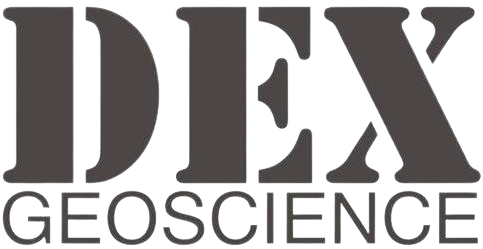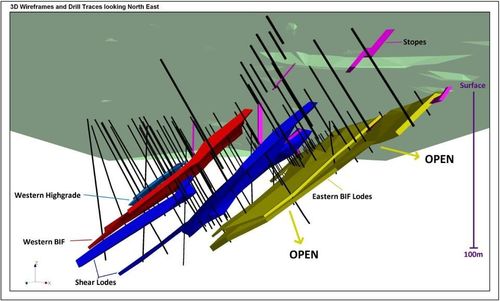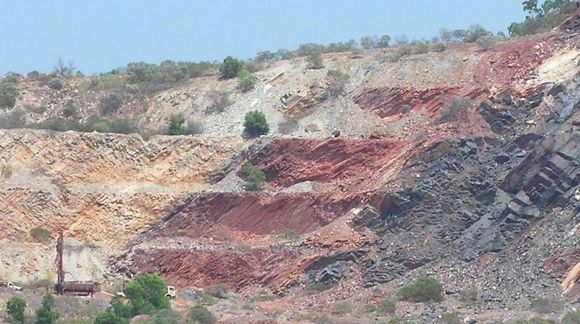As a leading international mining and exploration consultancy, we offer a comprehensive range of expert services tailored to meet your project needs. With over 25 years of industry experience, our team is equipped to handle everything from exploration planning to mine development. Explore our services below to discover how Dex Geoscience can support your next venture.
Dex Geoscience Discoveries
Dex consulting has been involved in successful exploration projects across Western Australia such as the discovery of a 40,000oz gold deposit south of Marvel Loch in 2010, and the pegging of the "Austin" VMS deposit on vacant ground near Meekatharra in 2006.
During 2018 the L Channel diamond deposit was discovered for IBDH draining the Ellendale diamond field.
Dex was responsible for the re-interpretation of the "Austin" deposit historic drilling whilst consulting to Mercator Gold, then used historic geophysical data to provide a new 3D geological interpretation. Originally named "Ridgeback" by CRA in the early 1990's, the magnetic core was later drilled with significant VMS Copper mineralisation discovered adjacent to the historic drilling.
Visualisation of 3D drill holes through resource wireframes & geophysical models are skills which Dex Geoscience offers. The 3D drilling display examples are Dex 2010 and 2006 discoveries.
Dex Geoscience is often ahead of the field. A recent example was Dex consultants pegging 270 sq. km of vacant ground in the Fraser Range during 2011. This exploration ground was only 18km away from the 2012 "Nova" copper - nickel discovery and some of the hottest exploration ground in Australia in 2012.
Dex Geoscience Consulting
Mining and Exploration Specialist
Drill hole targetting using Aircore, RC & Diamond drill rigs also requires track permit and drill permit application management. Underground mineral lode targetting using underground diamond rigs, geophysics, resource estimation management, tenement management, historic data research and drilling database management are offered by Dex Geoscience.
Dex Geoscience Research
Published AIG 2011
Global Expansion from Density Decay
There will always be contradicting evidence to explain why the globe is variable in size or why it is fixed in size. But if the globe was smaller in size, then what other geophysical reasoning could explain such expansion? The idea of planet expansion is not new, and the ideas represented in this brief are not new either.
Dex Geoscience Mine Experience
Mines previously worked on include:
• WA - Marvel Loch Open Cut and Underground Gold mines
• WA - Meekatharra Open Cut and Underground Gold Mines
• WA - Radio Hill Open Cut and Underground Nickel Mine
• WA - Whundo Open Cut Copper Mine
• QLD - Bundarra Underground Copper Mine
• QLD - Ben Lomond Uranium / Molybdenum Mine
• WA - Koolan Island Open Cut Iron Ore Mine
• WA - The Ridges Open Cut Iron Mine
• WA - Bulong open cut Lateritic Nickel mine
• Kenya - Macalder Open Cut / Underground Copper Mine
Dex Geoscience Deposit Experience
Deposits previously worked on include:
• WA - Lake Maitland and Kintyre Uranium deposits
• QLD - Maureen Uranium deposit
• NT - Angela and Pamela Uranium deposits
• PNG - Wowo Gap Lateritic Nickel Deposit
• WA - Ellendale and Nabberu Diamondiferous Pipes
• Greenland - Iron ore discovery
• South Korea - Uranium Deposit animations
• South Africa - Bushveld area for PGE and diamonds
Our Experience
Exploration experience is extensive, and includes commodities such as REE, PGE, Potash, Tin, Manganese, Graphite, Tungsten, Silver, Lead, Zinc, Titanium and Sulphide.
The consultancy also practices Ethical Mining Protocol (EMP) which include policies such as:
• No exploration operations in National Parks
• No exploration in wildlife sanctuaries (i.e. polar bear)
• No exploration in or around town sites (i.e. golf courses)





